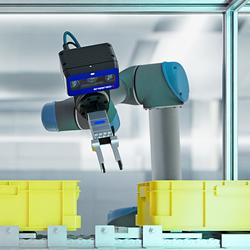Cellula successfully completes demonstration missions using hydrogen fuel cell powered AUV
Cellula Robotics Ltd. is excited to announce the successful completion of various demonstration missions using the hydrogen fuel cell powered autonomous underwater vehicle (AUV), Solus-LR.
Cellula Robotics Ltd. is excited to announce the successful completion of various demonstration missions using the hydrogen fuel cell powered autonomous underwater vehicle (AUV), Solus-LR.
The missions, executed in Vancouver's Indian Arm inlet on July 15th, demonstrated the remarkable autonomous launch of a micro-AUV from Solus-LR while submerged and underway. Following the launch, the micro-AUV surfaced and transmitted a status message to Solus-LR's command and control center via Iridium satellite. The operation was the first of its kind and demonstrated near real-time, over-the-horizon communications from a submerged AUV.
The demonstration was observed by representatives from Trusted Autonomous Systems (TAS), the Royal Australian Navy, Royal Canadian Navy, Defence Research Development Canada (DRDC), Defence Science & Technology Group (DSTG Australia) and the Minister of State for Trade, Vancouver-Fraserview, George Chow, as part of Cellula's ongoing work with TAS' SeaWolf program.
Built on a research and development project originally sponsored by DRDC under the All Domain Situational Awareness (ADSA) Science and Technology (S&T) Program that developed Solus-LR, the mission re-enforced the capabilities and potential of a long-range, hydrogen fuel cell powered AUV designed for submerged missions in excess of 2,000 km.
CEO of TAS, Professor Jason Scholz said: "We were extremely impressed to see these novel technologies, particularly the hydrogen fuel-cell succeed in sea trial conditions. This type of power provides an additional viable option to diesel, battery-only and nuclear propulsion. Cellula Robotics continue to impress on the SeaWolf program, along with the contributions of our many Australian partners in the consortium. We aim to continue to develop this capability option for Defence consideration."
About Cellula Robotics Ltd.
Engineering solutions, intelligent systems.
Cellula Robotics Ltd. is a proudly Canadian, privately owned, world leading marine technology company specializing in turnkey design and production of subsea robotic systems. Headquartered in Burnaby, British Columbia, Cellula employs 70 staff with a dedicated team of highly-skilled engineers, designers, and technicians. Cellula's extensive experience in projects that require integrated mechanical, electrical, hydraulic, and software elements in a subsea environment is evident in its wide client base spanning over the defence, mineral exploration and oil & gas sectors. Cellula prides itself in having developed and implemented a rigorous ISO 9001:2015 Quality Management System that continues to meet and exceed client expectations.
For more information, please go to www.cellula.com.
About Trusted Autonomous Systems
Trusted Autonomous Systems (TAS) is Australia's first Defence Cooperative Research Centre. It is uniquely equipped to deliver research into world-leading autonomous and robotic technologies. Its goal: to enable trusted and effective cooperation between humans and machines. TAS aims to improve the competitiveness, productivity, and sustainability of Australian industry through industry-led projects with real translation opportunities to move technology rapidly from universities into industry and ultimately into leading edge capability for the Australian Defence Force. The SeaWolf program phase 1 is undertaken on behalf the Royal Australian Navy (RAN) Warfare Innovation Navy (WIN) Branch.
Featured Product

3D Vision: Ensenso B now also available as a mono version!
This compact 3D camera series combines a very short working distance, a large field of view and a high depth of field - perfect for bin picking applications. With its ability to capture multiple objects over a large area, it can help robots empty containers more efficiently. Now available from IDS Imaging Development Systems. In the color version of the Ensenso B, the stereo system is equipped with two RGB image sensors. This saves additional sensors and reduces installation space and hardware costs. Now, you can also choose your model to be equipped with two 5 MP mono sensors, achieving impressively high spatial precision. With enhanced sharpness and accuracy, you can tackle applications where absolute precision is essential. The great strength of the Ensenso B lies in the very precise detection of objects at close range. It offers a wide field of view and an impressively high depth of field. This means that the area in which an object is in focus is unusually large. At a distance of 30 centimetres between the camera and the object, the Z-accuracy is approx. 0.1 millimetres. The maximum working distance is 2 meters. This 3D camera series complies with protection class IP65/67 and is ideal for use in industrial environments.
